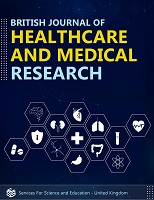Frequency Specific Microcurrent in the Treatment of Hypermobility Spectrum Disorders: A Case Report
DOI:
https://doi.org/10.14738/bjhr.1203.19020Keywords:
Ehlers-Danlos, hypermobility spectrum disorders, HSD, frequency specific microcurrent, connective tissueAbstract
This case follows the use of Frequency Specific Microcurrent (FSM) to treat a 33-year-old woman with hypermobile joints, chronic neck and back pain, and chronic anxiety. FSM treatment involved using frequencies resurrected from the 1920’s applied with a modern microcurrent device. The current and frequencies were applied from the neck to the feet. Photos before and after treatment illustrated a strengthening of connective tissue in the wrist joints as evidenced by decreased wrist flexion. FSM treatments included frequencies to correct for “torn and broken” connective tissue. In addition to the observable decrease in flexibility immediately post FSM treatments, the patient reported that she felt “sturdier” and ‘tight in a good way”. At subsequent visits, the patient reported that her neck pain, back pain and generalized anxiety were reduced. Treatment effects lasted from 1-6 weeks, with more lasting effects demonstrated with cumulative treatments, lysine supplementation, and dietary modifications to reduce dietary oxalates as well as exposure to chemicals and pesticides found in food. This study suggests that FSM is potentially a useful therapy to effectively treat hypermobility spectrum disorder and should be studied in a larger sample.
Downloads
Published
How to Cite
Issue
Section
License
Copyright (c) 2025 Carron Perry

This work is licensed under a Creative Commons Attribution 4.0 International License.






